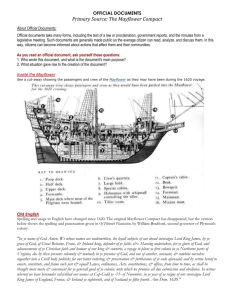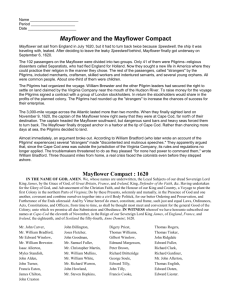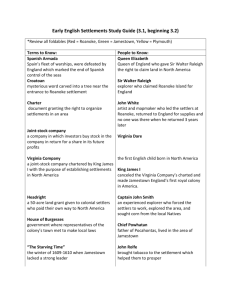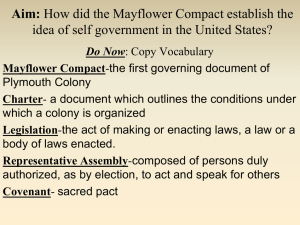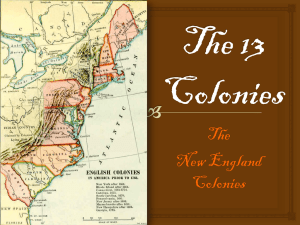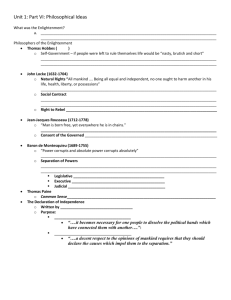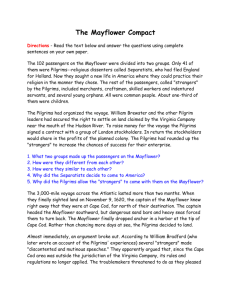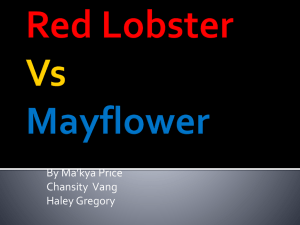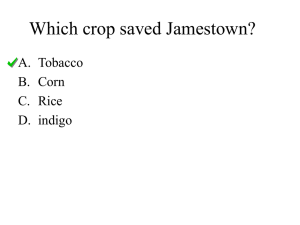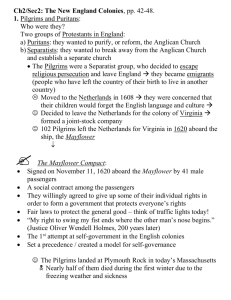File
advertisement
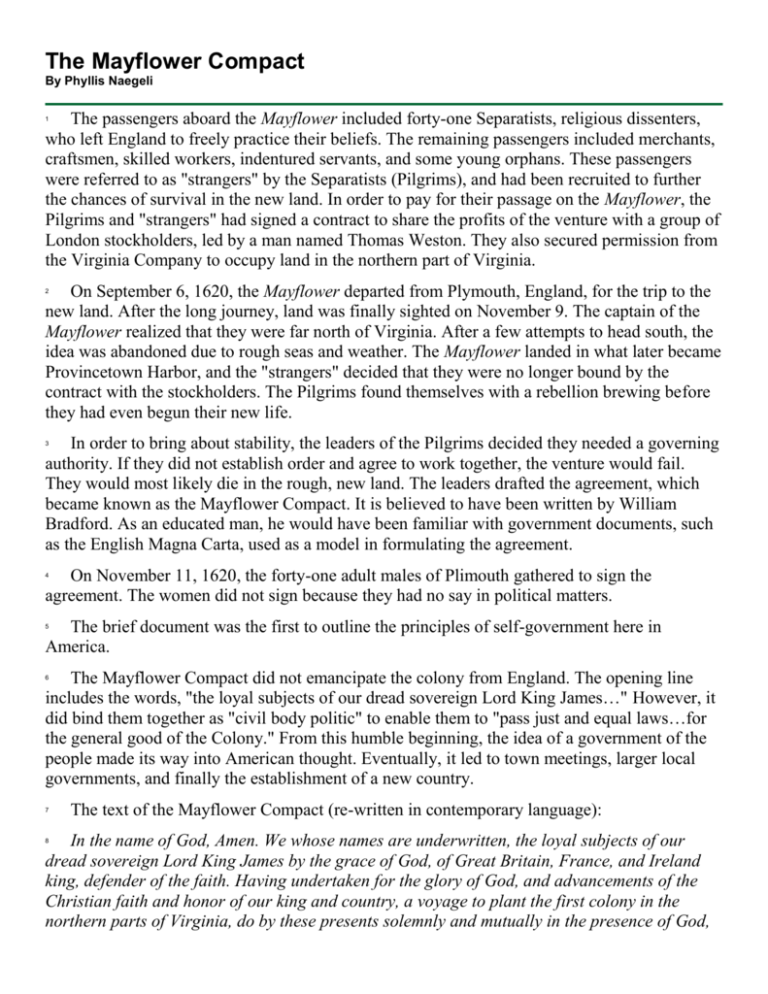
The Mayflower Compact By Phyllis Naegeli The passengers aboard the Mayflower included forty-one Separatists, religious dissenters, who left England to freely practice their beliefs. The remaining passengers included merchants, craftsmen, skilled workers, indentured servants, and some young orphans. These passengers were referred to as "strangers" by the Separatists (Pilgrims), and had been recruited to further the chances of survival in the new land. In order to pay for their passage on the Mayflower, the Pilgrims and "strangers" had signed a contract to share the profits of the venture with a group of London stockholders, led by a man named Thomas Weston. They also secured permission from the Virginia Company to occupy land in the northern part of Virginia. 1 On September 6, 1620, the Mayflower departed from Plymouth, England, for the trip to the new land. After the long journey, land was finally sighted on November 9. The captain of the Mayflower realized that they were far north of Virginia. After a few attempts to head south, the idea was abandoned due to rough seas and weather. The Mayflower landed in what later became Provincetown Harbor, and the "strangers" decided that they were no longer bound by the contract with the stockholders. The Pilgrims found themselves with a rebellion brewing before they had even begun their new life. 2 In order to bring about stability, the leaders of the Pilgrims decided they needed a governing authority. If they did not establish order and agree to work together, the venture would fail. They would most likely die in the rough, new land. The leaders drafted the agreement, which became known as the Mayflower Compact. It is believed to have been written by William Bradford. As an educated man, he would have been familiar with government documents, such as the English Magna Carta, used as a model in formulating the agreement. 3 On November 11, 1620, the forty-one adult males of Plimouth gathered to sign the agreement. The women did not sign because they had no say in political matters. 4 The brief document was the first to outline the principles of self-government here in America. 5 The Mayflower Compact did not emancipate the colony from England. The opening line includes the words, "the loyal subjects of our dread sovereign Lord King James…" However, it did bind them together as "civil body politic" to enable them to "pass just and equal laws…for the general good of the Colony." From this humble beginning, the idea of a government of the people made its way into American thought. Eventually, it led to town meetings, larger local governments, and finally the establishment of a new country. 6 7 The text of the Mayflower Compact (re-written in contemporary language): In the name of God, Amen. We whose names are underwritten, the loyal subjects of our dread sovereign Lord King James by the grace of God, of Great Britain, France, and Ireland king, defender of the faith. Having undertaken for the glory of God, and advancements of the Christian faith and honor of our king and country, a voyage to plant the first colony in the northern parts of Virginia, do by these presents solemnly and mutually in the presence of God, 8 and one of another, covenant & combine ourselves together into a civil body politic; for our better ordering and preservation and furtherance of the ends aforesaid; and by virtue hereof to enact, constitute, and frame such just and equal laws, ordinances, Acts, constitutions and offices, from time to time, as shall be thought most meet and convenient for the general good of the Colony: unto which we promise all due submission and obedience. In witness whereof we have hereunder subscribed our names at Cape Cod, 11 November, in the eighteenth year of the reign of our sovereign Lord King James of England, France, & Ireland, and the fifty fourth year of the reign of Scotland, A.D. 1620. 9 Copyright © 2012 edHelper Name _____________________________ Date ___________________ The Mayflower Compact 1. Who most likely wrote the Mayflower Compact? Myles Standish William Brewster John Alden William Bradford 3. The Pilgrims landed at Cape Cod in November of 1620. However, this was not their original destination. Where was the original destination? South Carolina Virginia Florida New York 5. Why did the women not sign the compact? 2. Why was the Compact necessary? King James of England told them to write their own laws. The Pilgrims wanted to be emancipated from England. The Pilgrims wanted to make an agreement with Native Americans for land. The "strangers" felt they were not bound by the contract made in England. 4. Who were the "strangers"? Indentured slaves The ship's crew People recruited to ensure survival in the new land Native Americans 6. When was the Mayflower Compact signed? Name _____________________________ Date ___________________ The Mayflower Compact 7. What was one purpose of the Mayflower Compact? 9. What did the leaders feel would happen if they did not establish an agreement among the "strangers" and the Separatists? 8. Which company gave permission to settle in their territory in the new land? English Company Holland Company London Company Virginia Company 10. How many men signed the Mayflower Compact? Twenty-one Fifty-one Forty-one Sixty-six The Mayflower Compact - Answer Key 1 William Bradford 2 The "strangers" felt they were not bound by the contract made in England. 3 Virginia 4 People recruited to ensure survival in the new land 5 Women had no say in political matters. 6 November 11, 1620 7 To bind the people into a "civil body politic." To enable them to enact laws. To enable them to establish a government. 8 Virginia Company 9 If they did not work together, they would most likely all die. 10 Forty-one


